What is Scalping?
Introduction
Scalping is one topic that I’ve always been fascinated with. I know many of you have asked several times for us to make videos about scalping, but I always resisted making videos on scalping because I felt that scalping is best explained while scalping. If I make a video at the end of the day, and tell you that this is the trade that I took, here is where I entered and here’s where I exited, this is what my profit is; I would not have done justice to the topic.
To understand scalping, you need to feel things in real-time. You need to see things in real-time. The profits and losses have to be real. The emotions have to be real. The pressure has to be real.
that is what I wanted to show because that is the essence of scalping. Anyway, that was the reason why I just kept pushing, making a video about scalping. But in the past week, I got a couple of opportunities to take scalping trades. And what I did was that I recorded those trades while I taking them. , this worked out beautifully because I was able to capture the real essence of scalping in real-time. You guys are going to love it. We’ll cover all that in this video. It’s going to be awesome and interesting.
What is scalping?
In very simple terms, scalping is a very fast form of intraday trading where traders get in and out of the trades within a few minutes or seconds. Unlike the regular intraday rates where trades can last for half an hour, one hour, two hours, or sometimes several hours, scalping happens much faster. It happens within minutes and sometimes, even within seconds.
Now me of you might be thinking that, okay, how much profit can someone make within a few minutes or a few seconds? It takes several hours for the market to make a move or a certain stock to make a move and what we have seen time and time again, that we have to wait for the trades to work out.
Otherwise, if we come out too early, we don’t make that kind of a profit. If someone is getting in and out of a trade within a few seconds, how much money can they make? Well, here is where the scalper’s mindset is different from the mindset of regular traders. Scalpers understand very simple math that profit is equal to position size multiplied by the profit percentage.
For example, if you take a trade of 5 lakh rupees and make a profit of 2%, your profit would be 10,000 rupees. What do we do? The regular intraday traders, what do we focus on? We focus on the percentage profit, right. We want to take trades where we are getting 2%, 3%, 5%, or 10% profit, but the scalper has a very different mindset.
The scalper says I don’t want big profits. I don’t want 5%. I don’t want 10% in a trade. It is much easier for me to make a profit of 0.5% or a 0.2% profit al rather than waiting for me big profits, but I will compensate for this small percentage profit with big position size.
If we look into the mindset of a scalper, the scalper would be happy to make a profit of 0.2%, but on a position size, which is much bigger, let’s say 50 lakh rupees.
Eventually, the profit that they will make out of the trade would be the same as any other regular intraday trader because, at the end of the day, it is just simple math, profit percentage multiplied by the position size. Don’t be under the impression that scalpers make less money than any other trader out there just because they’re staying in a trade for a very short amount of time. The best part is yet to come. While the regular intraday traders might be taking, two or three trades in a day, a scalper can take as many as 40, 50, 60, and sometimes even hundreds of trades within a day.
I remember when I met a scalper in the US. He used to take on an average of 200 trades in a day, but how is it even possible? How can someone take 250 trades? Well, just think about it for a second. The individual trades of a scalper are lasting for just a few minutes or a few seconds. Once they are out of the trade, their capital is free. Their time is free.
They’re available to deploy that capital for the next trade. Through this rotation of capital, scalpers can increase the returns much, much higher than an average intraday trader. The world of scalping is very fast-paced. People are going in and out of trades capturing quick profits, and then moving on next trades. It’s a very exciting world.
Live Examples
Trade #1
Now, let me give you a taste of that excitement using live trades. This is a trade, which I took last Tuesday, where I wanted to take a long trade on bank nifty and for taking a long-term back to 50, I wanted to short the 35,000 put option of back nifty and the idea was that the market was coming down.
The moment bank nifty came down to the critical support that I was watching out for, I wanted to go for a bounce. I wanted to play for the bounce, very short, even a minute bounce, which would give me, let’s say a good 20-30,000 rupees. I will take it and will come out. But the key thing to watch out for in a trade like this is timing because if you mess with your entry, you can get into me serious.
Keep watching how I’m waiting for the market to come down to that level and the moment the market comes down, I will place my order and it requires a lot of patience. Let’s just keep watching. Now the market is coming closer and closer to my key level. I’m getting ready to place my order.
This is my short put option order. I’m going to go with the quantity of 500. And I have to be very precise in terms of entries. I’m just going to keep up the timing. I will just have to time myself properly, let’s see how it goes. Right now, the market is coming closer and closer and closer.
And there you go; you see that perfect spike over there. We see the premium rising to around 572. that’s where I placed the order and the order didn’t get executed. I modified the order and it got executed this time, and now you can see the penal fluctuation. It will move quickly because the quantity is bigger.
The thing with me is that I’m not very good at executing orders because my team normally does it. But again, I was looking for a profit of 20, 25,000 rupees in this particular case. And, the market did bounce back as I was expecting from that support.
You can see right here and the profits were coming to my range. I just wanted to give a little bit more timing that the bounce was looking decent enough that it was, the level was holding. I just waited for a little bit longer and then I placed my exit order. And even there at one point, my profit went up to about 36,000 rupees, which I was not able to grasp.
You can see how quickly the profits and losses were changing. that is where finally at the end of the day, I was able to place that order, and the order got executed and I came out of profit. This was a very quick trade. It did not take a lot of time. I believe it was about three or four minutes long. That’s how a scalping trade is done.
Trade #2
Now, this is a trade one day before the trade that we just saw. And the setup was very similar. Bank Nifty was coming down and I was looking for a bounce on bank nifty at a key support level. In this case, I went with a quantity of 600 and I was waiting for a quick bounce back from the support.
I was ready with my order at the moment, a Bank Nifty got that bounce and I placed my order. And the order got executed. Now here, this is where you have to keep in mind that you will not automatically get into profit immediately. You will see some penal fluctuations, which you have to be okay with.
Here I got a very good bounce and the profits at one point of time, they went very well. But again, my reflexes are not very strong when I have to execute these orders. And since I was recording, I had to make sure that I’m recording all these. The profit at one point went up to 35,000 or something, but by the time I got my order executed, it inverted.
We even went down to negative before it bounced back and it gave me a profit. And eventually, I came out of the trade with a profit of somewhere around 20,000 rupees. This is how typically it goes, guys. It’s a very quick get in, get out kind of a game.
It’s not too much of a rocket. You want to just time your entry, take the trade, look out for our exit on the profit side of the trade is working out, but if the trade is not working out, you have to cut your losses and you have to get outright. That’s how the game is played. , guys, with these two examples, I’m hoping that you understood how scalping is done in real life.
Although I have made this topic a little bit simplified to illustrate the key concept behind scalping, but in real life, there are a lot of aspects that you need to consider. With the help of those two examples, I’m hoping that you’ve got a good sense of how scalping works in real life.
Pros and Cons of Scalping
Now let’s talk about the pros and cons of scalping.
Pros of Scalping
Let’s start with the pros of scalping.
1. The first advantage of scalping is that the exposure to the market is very short.
What is exposure?
Exposure simply means that how long you are exposed to the risk. The longer your trade is open, the higher will be the exposure because the higher chance that something could go wrong during that trade.
For example, I have a swing trade, which is spanning for several days. I’m going to let’s say, hold a trade for two, three weeks, or four weeks. Now within that three, four weeks, anything bad could happen, right? Bad GDP numbers or some new pandemic. Or God knows what else can, you know, pop up.
The next morning, I have to deal with that situation, that huge gap up or the gap down. That is a risk. That is the exposure that I’m having in a trade. And even if you take the regular intraday trades, where there is no overnight risk, how many times have you seen perfectly working profitable trades in the first half that go into losses in the second half.
We see all these profits in the morning, but what happens in the second half is that all those profits are gone because the market took a U-turn. Even though the exposure in intraday trades is much smaller than the swing trades, it is still there. But the beauty of scalping trades is that the trades are lasting for just a few minutes or a few seconds.
Everything is happening right in front of your eyes. It’s a perfect example of my trade. One of the trades I stayed for about, I think, what three minutes, and the other one was for about seven or eight minutes. I’m not worried about exposure in those states. Why? Because I know that this state is not going to last that long. By keeping the exposure to a minimum, the scalper works in a very safe environment.
2. The second advantage of scalping is high leverage.
As I mentioned earlier, that scalpers take a big position to compensate for the smaller percentage profit, and for taking bigger positions, they take advantage of the leverage that is provided by their brokers.
I just want to be very clear that for regular intraday trades or regular swing trades, I’m not a big fan of taking high leverage because the risks are very high. However, there is one place where I see the advantage of leverage i.e., Scalping. Why? Because it has lower exposure. A scalper might be taking high leverage, a higher risk, but since the exposure is small and the consequences of taking that high leverage will be known within a few minutes or a few seconds. Even though the leverage is high, the exposure is very small and that enables the scalpers to take higher leverage and hence increase their profitability.
3. Now the third advantage of scalping is very interesting and the advantage is that you can expand your setups.
For a regular intraday trader, we go with, let’s say two or three setups in a day. For example, you may have a certain level to watch out for, for taking a long trade or a short trade or some kind of a breakout or some kind of momentum. Let’s say five setups for a maximum. That is what a regular intraday trader typically works with. But as a scalper, you are not married to just a couple of setups.
There are hundreds of setups that can be spotted within a day and can be taken advantage of. I can share my experience from both perspectives. I am a regular intraday trader most of the time, and I’m a scalper sometimes.
And as a regular intraday trader, I’m not very comfortable going against the sentiment of the market, because my experience tells me that if I go against the sentiment of the market, my trade most likely will end up in losses. But when I’m scalping, I don’t mind going against the sentiment of the market because who cares about the market sentiment when you are going to be in a trade for just a few minutes or a few seconds.
Market sentiment is inconsequential in that short of a time frame. So far, we have talked about all the nice things, all the good things about scalping. But not everything is nice and shiny in scalping.
Cons of Scalping
Now let me talk about the cons, the disadvantages of scalping.
- The first disadvantage of scalping is that the entry and exit into a trade have to be perfect.
You need to enter into the trade at the perfect time and you need to get out of the trade at the perfect time, both when you are making profits or you’re making losses. Just like a sniper, you need to take the shot when the target is at the perfect spot, otherwise, that trade can get you into trouble.
And although it is true for regular intraday trades as well, in regular intraday trades, we have a lot of time in our hands. There is not too much pressure to have a perfect entry because if you are trading with the market sentiment, most likely the market would turn in your favour at some point in time.
And the market will forgive you for making those mistakes. Whereas in scalping, you’re not taking advantage of the market sentiment. Essentially, it’s all on you. You need to be perfect. You need to have a perfect entry. You need to have a perfect exit.
- Now, the second disadvantage of scalping, is that it has a high transaction cost
If you’re taking hundreds of trades in a day, you have to pay that much brokerage. You have to pay that much taxes. Just because you’re taking more trades, you have to pay more charges. Unless you have a strategy that gives you an edge over the market, what will happen is that if you just keep scalping like a regular intraday trade, you most likely will lose money because with every trade you’re paying more and more to your broker and the government.
- Now, the next disadvantage of scalping, which I think a lot of people, don’t talk about is that Scalping is a very stressful activity. Because you have to be in front of the system all day long. You need to wait for the perfect setup to come. You need to have a perfect entry. You need to have a perfect exit.
You need to make decisions in real-time. You need to cut losses when they are small. This may sound very exciting in the beginning, but if you keep doing this day after day, week after week, year after year, you will feel the effect of that stress in your daily life. And that can be very harmful. So, these are the pros and cons of scalping.
Is Scalping Profitable?
I’m sure you guys understand this by now. But the one question that people ask eventually is that is scalping profitable, right? Because there are people out there who are willing to take that kind of stress to be able to make money. But the real question that they want to get answered is that is scalping even profitable. Is it even worth pursuing or not?
Now I know that there are a lot of people out there who frown upon scalping. They say, oh, scalping is for rookies. Professionally they don’t do scalping. That is not true. In India, I know that scalping is not very famous and scalping is not done by a lot of people.
But when I was in the USA, I saw many full-time traders who are professional scalpers. That is all they do day in and day out. And they’re doing perfectly fine. I think it’s not a question about profitability because it is profitable. If you are using the right strategy, it is a matter of your personality.
If you have one of those personalities who prefer to get in and out of trades and who are very impatient with, let’s say sitting on a trade for two hours or three hours, then scalping can be right for you. And if I can tell you from my own experience, I used to scalp very actively up until 2017, but later I felt that I could not do it anymore.
I felt like it’s a little too much stress for me. Maybe I’m getting a little too old for this. I still do scalping once in a while. Like the couple of cases that we talked about in this video. I like to scalp when there is no clear momentum in the market and when the market doesn’t have a clear direction in the bulls and bears.
On deals like this, or sometimes it’ll be, if I have some other commitments, I cannot sit in front of the system all day long. On days like that, I look for quickly getting in and getting out. But apart from that, I like to stick with my regular intraday trades where I can, you know, take a trade, sit on a trade and hopefully make me money.
Scalping Strategies
Having said that I will quickly touch upon some of the famous scalping strategies. And this is by no means a fully exhaustive list. There are hundreds and hundreds of other strategies out there, but this is like the broad classification of a scalping strategy. Let me just touch upon that. These are the common categories of scalping strategies that I’ve used in the past, strategies based on volatility, based on momentum, based on those live trades that we took, they were based on the level.
Gamma scalping and people do stop-loss scalping, right? There are all these different categories in which people look for setups, where they can, you know, take scalp trades. But I would like to just answer this one thing that is scalping for everybody? And the answer is no. See what happens is that every one of us has a different personality, a different set of constraints.
Most of us, are working in jobs. We have full-time jobs. We can take care of that. We are to take care of family and there are different obligations. And because of these time commitments, I think that scalping is not for everybody, right? Because not everybody can sit in front of their monitor all day long and look for these, you know, setups and trades.
If you’re considering scalping, please make sure that you have the right kind of bandwidth and you have the right kind of infrastructure to be able to do Scalping effectively. Again, this was just a basic introduction to scalping. I, by no means, wanted to make this an exhaustive video. I wanted to keep it short.
The bottom-line
I wanted to give you guys a real example. I want you to feel the scalp in real-time, and I hope that I did it. Scalping is a whole world in itself. There are many different topics to talk about when it comes to scalping, right? Which type of orders to place, where to put your stop-loss, what is the importance of volume, timeframe, analysis, physical setups, or keyboard shortcuts, which platforms to use, which instruments to use.
There are many things that we can talk about scalping. We probably will do that. If you guys give us feedback, if you guys like these kinds of videos, encourage us. We will do more of these, but whatever is the case, guys, at least I hope that through this video you learned something new today.
Key Takeaways
- What is Scalping?
- Scalping is a fast form of intraday trading with trades lasting minutes or seconds.
- Real-time experience is essential for understanding scalping, involving real profits, losses, and quick decision-making.
- Focus on quick trades with smaller percentage profits but larger position sizes.
- Scalpers can take numerous trades in a day, exceeding 40, 50, or even hundreds.
- Pros of Scalping:
- Short Exposure:
- Minimizes exposure to market risks with very short-lived trades.
- High Leverage:
- Uses high leverage to compensate for smaller percentage profits.
- Diverse Setups:
- Allows for a wide range of setups, providing more trading opportunities.
- Short Exposure:
- Cons of Scalping:
- Perfect Entry and Exit Required:
- Precision in entry and exit points is crucial.
- High Transaction Costs:
- High frequency of trades leads to increased transaction costs.
- Stressful Activity:
- Constant real-time decision-making can be stressful over time.
- Perfect Entry and Exit Required:
- Is Scalping Profitable?
- Scalping can be profitable with the right strategy.
- Suitability depends on an individual’s personality and preferences.
- Professional traders engage in scalping successfully.
- Scalping Strategies:
- Strategies include volatility-based, momentum-based, level-based, gamma scalping, and stop-loss scalping.
- Choice of strategy depends on preferences, market conditions, and risk tolerance.
- Conclusion:
- Scalping is not for everyone and requires time, dedication, and specific skills.
- The video provides a basic introduction, and further topics can be explored based on feedback and interest.
Howdy!
If you’re here for the first time, let’s get introduced.
VRD Nation is India’s premier stock market training institute and we (Team VRD Nation) are passionate about teaching each and every aspect of investing and trading.
If you’re here for the first time, don’t forget to check out “Free Training” section where we have tons of free videos and articles to kick start your stock market journey.
Also, we got two awesome YouTube channels where you can continue the learning process.
Must-Read Articles
What is Scalping?
Introduction
Scalping is one topic that I’ve always been fascinated with. I know many of you have asked several times for us to make videos about scalping, but I always resisted making videos on scalping because I felt that scalping is best explained while scalping. If I make a video at the end of the day, and tell you that this is the trade that I took, here is where I entered and here’s where I exited, this is what my profit is; I would not have done justice to the topic.
To understand scalping, you need to feel things in real-time. You need to see things in real-time. The profits and losses have to be real. The emotions have to be real. The pressure has to be real.
that is what I wanted to show because that is the essence of scalping. Anyway, that was the reason why I just kept pushing, making a video about scalping. But in the past week, I got a couple of opportunities to take scalping trades. And what I did was that I recorded those trades while I taking them. , this worked out beautifully because I was able to capture the real essence of scalping in real-time. You guys are going to love it. We’ll cover all that in this video. It’s going to be awesome and interesting.
What is scalping?
In very simple terms, scalping is a very fast form of intraday trading where traders get in and out of the trades within a few minutes or seconds. Unlike the regular intraday rates where trades can last for half an hour, one hour, two hours, or sometimes several hours, scalping happens much faster. It happens within minutes and sometimes, even within seconds.
Now me of you might be thinking that, okay, how much profit can someone make within a few minutes or a few seconds? It takes several hours for the market to make a move or a certain stock to make a move and what we have seen time and time again, that we have to wait for the trades to work out.
Otherwise, if we come out too early, we don’t make that kind of a profit. If someone is getting in and out of a trade within a few seconds, how much money can they make? Well, here is where the scalper’s mindset is different from the mindset of regular traders. Scalpers understand very simple math that profit is equal to position size multiplied by the profit percentage.
For example, if you take a trade of 5 lakh rupees and make a profit of 2%, your profit would be 10,000 rupees. What do we do? The regular intraday traders, what do we focus on? We focus on the percentage profit, right. We want to take trades where we are getting 2%, 3%, 5%, or 10% profit, but the scalper has a very different mindset.
The scalper says I don’t want big profits. I don’t want 5%. I don’t want 10% in a trade. It is much easier for me to make a profit of 0.5% or a 0.2% profit al rather than waiting for me big profits, but I will compensate for this small percentage profit with big position size.
If we look into the mindset of a scalper, the scalper would be happy to make a profit of 0.2%, but on a position size, which is much bigger, let’s say 50 lakh rupees.
Eventually, the profit that they will make out of the trade would be the same as any other regular intraday trader because, at the end of the day, it is just simple math, profit percentage multiplied by the position size. Don’t be under the impression that scalpers make less money than any other trader out there just because they’re staying in a trade for a very short amount of time. The best part is yet to come. While the regular intraday traders might be taking, two or three trades in a day, a scalper can take as many as 40, 50, 60, and sometimes even hundreds of trades within a day.
I remember when I met a scalper in the US. He used to take on an average of 200 trades in a day, but how is it even possible? How can someone take 250 trades? Well, just think about it for a second. The individual trades of a scalper are lasting for just a few minutes or a few seconds. Once they are out of the trade, their capital is free. Their time is free.
They’re available to deploy that capital for the next trade. Through this rotation of capital, scalpers can increase the returns much, much higher than an average intraday trader. The world of scalping is very fast-paced. People are going in and out of trades capturing quick profits, and then moving on next trades. It’s a very exciting world.
Live Examples
Trade #1
Now, let me give you a taste of that excitement using live trades. This is a trade, which I took last Tuesday, where I wanted to take a long trade on bank nifty and for taking a long-term back to 50, I wanted to short the 35,000 put option of back nifty and the idea was that the market was coming down.
The moment bank nifty came down to the critical support that I was watching out for, I wanted to go for a bounce. I wanted to play for the bounce, very short, even a minute bounce, which would give me, let’s say a good 20-30,000 rupees. I will take it and will come out. But the key thing to watch out for in a trade like this is timing because if you mess with your entry, you can get into me serious.
Keep watching how I’m waiting for the market to come down to that level and the moment the market comes down, I will place my order and it requires a lot of patience. Let’s just keep watching. Now the market is coming closer and closer to my key level. I’m getting ready to place my order.
This is my short put option order. I’m going to go with the quantity of 500. And I have to be very precise in terms of entries. I’m just going to keep up the timing. I will just have to time myself properly, let’s see how it goes. Right now, the market is coming closer and closer and closer.
And there you go; you see that perfect spike over there. We see the premium rising to around 572. that’s where I placed the order and the order didn’t get executed. I modified the order and it got executed this time, and now you can see the penal fluctuation. It will move quickly because the quantity is bigger.
The thing with me is that I’m not very good at executing orders because my team normally does it. But again, I was looking for a profit of 20, 25,000 rupees in this particular case. And, the market did bounce back as I was expecting from that support.
You can see right here and the profits were coming to my range. I just wanted to give a little bit more timing that the bounce was looking decent enough that it was, the level was holding. I just waited for a little bit longer and then I placed my exit order. And even there at one point, my profit went up to about 36,000 rupees, which I was not able to grasp.
You can see how quickly the profits and losses were changing. that is where finally at the end of the day, I was able to place that order, and the order got executed and I came out of profit. This was a very quick trade. It did not take a lot of time. I believe it was about three or four minutes long. That’s how a scalping trade is done.
Trade #2
Now, this is a trade one day before the trade that we just saw. And the setup was very similar. Bank Nifty was coming down and I was looking for a bounce on bank nifty at a key support level. In this case, I went with a quantity of 600 and I was waiting for a quick bounce back from the support.
I was ready with my order at the moment, a Bank Nifty got that bounce and I placed my order. And the order got executed. Now here, this is where you have to keep in mind that you will not automatically get into profit immediately. You will see some penal fluctuations, which you have to be okay with.
Here I got a very good bounce and the profits at one point of time, they went very well. But again, my reflexes are not very strong when I have to execute these orders. And since I was recording, I had to make sure that I’m recording all these. The profit at one point went up to 35,000 or something, but by the time I got my order executed, it inverted.
We even went down to negative before it bounced back and it gave me a profit. And eventually, I came out of the trade with a profit of somewhere around 20,000 rupees. This is how typically it goes, guys. It’s a very quick get in, get out kind of a game.
It’s not too much of a rocket. You want to just time your entry, take the trade, look out for our exit on the profit side of the trade is working out, but if the trade is not working out, you have to cut your losses and you have to get outright. That’s how the game is played. , guys, with these two examples, I’m hoping that you understood how scalping is done in real life.
Although I have made this topic a little bit simplified to illustrate the key concept behind scalping, but in real life, there are a lot of aspects that you need to consider. With the help of those two examples, I’m hoping that you’ve got a good sense of how scalping works in real life.
Pros and Cons of Scalping
Now let’s talk about the pros and cons of scalping.
Pros of Scalping
Let’s start with the pros of scalping.
1. The first advantage of scalping is that the exposure to the market is very short.
What is exposure?
Exposure simply means that how long you are exposed to the risk. The longer your trade is open, the higher will be the exposure because the higher chance that something could go wrong during that trade.
For example, I have a swing trade, which is spanning for several days. I’m going to let’s say, hold a trade for two, three weeks, or four weeks. Now within that three, four weeks, anything bad could happen, right? Bad GDP numbers or some new pandemic. Or God knows what else can, you know, pop up.
The next morning, I have to deal with that situation, that huge gap up or the gap down. That is a risk. That is the exposure that I’m having in a trade. And even if you take the regular intraday trades, where there is no overnight risk, how many times have you seen perfectly working profitable trades in the first half that go into losses in the second half.
We see all these profits in the morning, but what happens in the second half is that all those profits are gone because the market took a U-turn. Even though the exposure in intraday trades is much smaller than the swing trades, it is still there. But the beauty of scalping trades is that the trades are lasting for just a few minutes or a few seconds.
Everything is happening right in front of your eyes. It’s a perfect example of my trade. One of the trades I stayed for about, I think, what three minutes, and the other one was for about seven or eight minutes. I’m not worried about exposure in those states. Why? Because I know that this state is not going to last that long. By keeping the exposure to a minimum, the scalper works in a very safe environment.
2. The second advantage of scalping is high leverage.
As I mentioned earlier, that scalpers take a big position to compensate for the smaller percentage profit, and for taking bigger positions, they take advantage of the leverage that is provided by their brokers.
I just want to be very clear that for regular intraday trades or regular swing trades, I’m not a big fan of taking high leverage because the risks are very high. However, there is one place where I see the advantage of leverage i.e., Scalping. Why? Because it has lower exposure. A scalper might be taking high leverage, a higher risk, but since the exposure is small and the consequences of taking that high leverage will be known within a few minutes or a few seconds. Even though the leverage is high, the exposure is very small and that enables the scalpers to take higher leverage and hence increase their profitability.
3. Now the third advantage of scalping is very interesting and the advantage is that you can expand your setups.
For a regular intraday trader, we go with, let’s say two or three setups in a day. For example, you may have a certain level to watch out for, for taking a long trade or a short trade or some kind of a breakout or some kind of momentum. Let’s say five setups for a maximum. That is what a regular intraday trader typically works with. But as a scalper, you are not married to just a couple of setups.
There are hundreds of setups that can be spotted within a day and can be taken advantage of. I can share my experience from both perspectives. I am a regular intraday trader most of the time, and I’m a scalper sometimes.
And as a regular intraday trader, I’m not very comfortable going against the sentiment of the market, because my experience tells me that if I go against the sentiment of the market, my trade most likely will end up in losses. But when I’m scalping, I don’t mind going against the sentiment of the market because who cares about the market sentiment when you are going to be in a trade for just a few minutes or a few seconds.
Market sentiment is inconsequential in that short of a time frame. So far, we have talked about all the nice things, all the good things about scalping. But not everything is nice and shiny in scalping.
Cons of Scalping
Now let me talk about the cons, the disadvantages of scalping.
- The first disadvantage of scalping is that the entry and exit into a trade have to be perfect.
You need to enter into the trade at the perfect time and you need to get out of the trade at the perfect time, both when you are making profits or you’re making losses. Just like a sniper, you need to take the shot when the target is at the perfect spot, otherwise, that trade can get you into trouble.
And although it is true for regular intraday trades as well, in regular intraday trades, we have a lot of time in our hands. There is not too much pressure to have a perfect entry because if you are trading with the market sentiment, most likely the market would turn in your favour at some point in time.
And the market will forgive you for making those mistakes. Whereas in scalping, you’re not taking advantage of the market sentiment. Essentially, it’s all on you. You need to be perfect. You need to have a perfect entry. You need to have a perfect exit.
- Now, the second disadvantage of scalping, is that it has a high transaction cost
If you’re taking hundreds of trades in a day, you have to pay that much brokerage. You have to pay that much taxes. Just because you’re taking more trades, you have to pay more charges. Unless you have a strategy that gives you an edge over the market, what will happen is that if you just keep scalping like a regular intraday trade, you most likely will lose money because with every trade you’re paying more and more to your broker and the government.
- Now, the next disadvantage of scalping, which I think a lot of people, don’t talk about is that Scalping is a very stressful activity. Because you have to be in front of the system all day long. You need to wait for the perfect setup to come. You need to have a perfect entry. You need to have a perfect exit.
You need to make decisions in real-time. You need to cut losses when they are small. This may sound very exciting in the beginning, but if you keep doing this day after day, week after week, year after year, you will feel the effect of that stress in your daily life. And that can be very harmful. So, these are the pros and cons of scalping.
Is Scalping Profitable?
I’m sure you guys understand this by now. But the one question that people ask eventually is that is scalping profitable, right? Because there are people out there who are willing to take that kind of stress to be able to make money. But the real question that they want to get answered is that is scalping even profitable. Is it even worth pursuing or not?
Now I know that there are a lot of people out there who frown upon scalping. They say, oh, scalping is for rookies. Professionally they don’t do scalping. That is not true. In India, I know that scalping is not very famous and scalping is not done by a lot of people.
But when I was in the USA, I saw many full-time traders who are professional scalpers. That is all they do day in and day out. And they’re doing perfectly fine. I think it’s not a question about profitability because it is profitable. If you are using the right strategy, it is a matter of your personality.
If you have one of those personalities who prefer to get in and out of trades and who are very impatient with, let’s say sitting on a trade for two hours or three hours, then scalping can be right for you. And if I can tell you from my own experience, I used to scalp very actively up until 2017, but later I felt that I could not do it anymore.
I felt like it’s a little too much stress for me. Maybe I’m getting a little too old for this. I still do scalping once in a while. Like the couple of cases that we talked about in this video. I like to scalp when there is no clear momentum in the market and when the market doesn’t have a clear direction in the bulls and bears.
On deals like this, or sometimes it’ll be, if I have some other commitments, I cannot sit in front of the system all day long. On days like that, I look for quickly getting in and getting out. But apart from that, I like to stick with my regular intraday trades where I can, you know, take a trade, sit on a trade and hopefully make me money.
Scalping Strategies
Having said that I will quickly touch upon some of the famous scalping strategies. And this is by no means a fully exhaustive list. There are hundreds and hundreds of other strategies out there, but this is like the broad classification of a scalping strategy. Let me just touch upon that. These are the common categories of scalping strategies that I’ve used in the past, strategies based on volatility, based on momentum, based on those live trades that we took, they were based on the level.
Gamma scalping and people do stop-loss scalping, right? There are all these different categories in which people look for setups, where they can, you know, take scalp trades. But I would like to just answer this one thing that is scalping for everybody? And the answer is no. See what happens is that every one of us has a different personality, a different set of constraints.
Most of us, are working in jobs. We have full-time jobs. We can take care of that. We are to take care of family and there are different obligations. And because of these time commitments, I think that scalping is not for everybody, right? Because not everybody can sit in front of their monitor all day long and look for these, you know, setups and trades.
If you’re considering scalping, please make sure that you have the right kind of bandwidth and you have the right kind of infrastructure to be able to do Scalping effectively. Again, this was just a basic introduction to scalping. I, by no means, wanted to make this an exhaustive video. I wanted to keep it short.
The bottom-line
I wanted to give you guys a real example. I want you to feel the scalp in real-time, and I hope that I did it. Scalping is a whole world in itself. There are many different topics to talk about when it comes to scalping, right? Which type of orders to place, where to put your stop-loss, what is the importance of volume, timeframe, analysis, physical setups, or keyboard shortcuts, which platforms to use, which instruments to use.
There are many things that we can talk about scalping. We probably will do that. If you guys give us feedback, if you guys like these kinds of videos, encourage us. We will do more of these, but whatever is the case, guys, at least I hope that through this video you learned something new today.
Key Takeaways
- What is Scalping?
- Scalping is a fast form of intraday trading with trades lasting minutes or seconds.
- Real-time experience is essential for understanding scalping, involving real profits, losses, and quick decision-making.
- Focus on quick trades with smaller percentage profits but larger position sizes.
- Scalpers can take numerous trades in a day, exceeding 40, 50, or even hundreds.
- Pros of Scalping:
- Short Exposure:
- Minimizes exposure to market risks with very short-lived trades.
- High Leverage:
- Uses high leverage to compensate for smaller percentage profits.
- Diverse Setups:
- Allows for a wide range of setups, providing more trading opportunities.
- Short Exposure:
- Cons of Scalping:
- Perfect Entry and Exit Required:
- Precision in entry and exit points is crucial.
- High Transaction Costs:
- High frequency of trades leads to increased transaction costs.
- Stressful Activity:
- Constant real-time decision-making can be stressful over time.
- Perfect Entry and Exit Required:
- Is Scalping Profitable?
- Scalping can be profitable with the right strategy.
- Suitability depends on an individual’s personality and preferences.
- Professional traders engage in scalping successfully.
- Scalping Strategies:
- Strategies include volatility-based, momentum-based, level-based, gamma scalping, and stop-loss scalping.
- Choice of strategy depends on preferences, market conditions, and risk tolerance.
- Conclusion:
- Scalping is not for everyone and requires time, dedication, and specific skills.
- The video provides a basic introduction, and further topics can be explored based on feedback and interest.

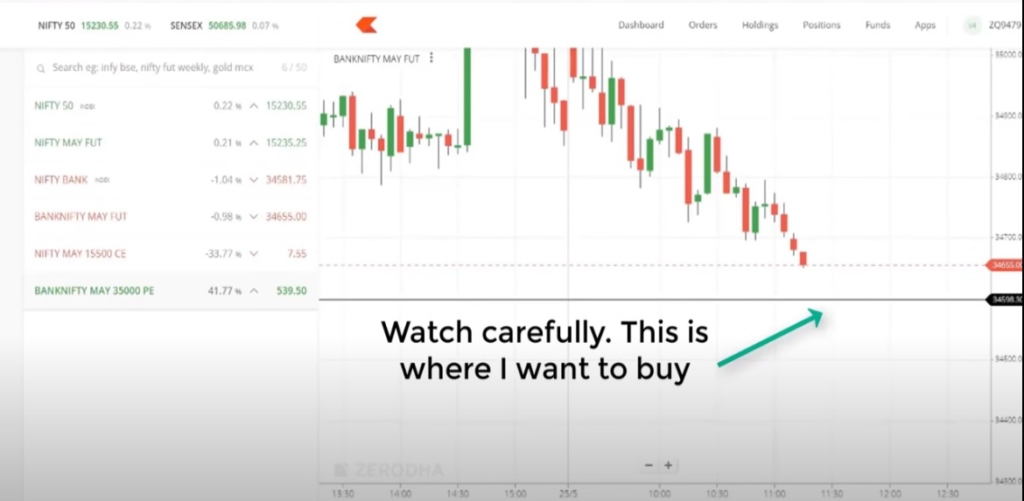
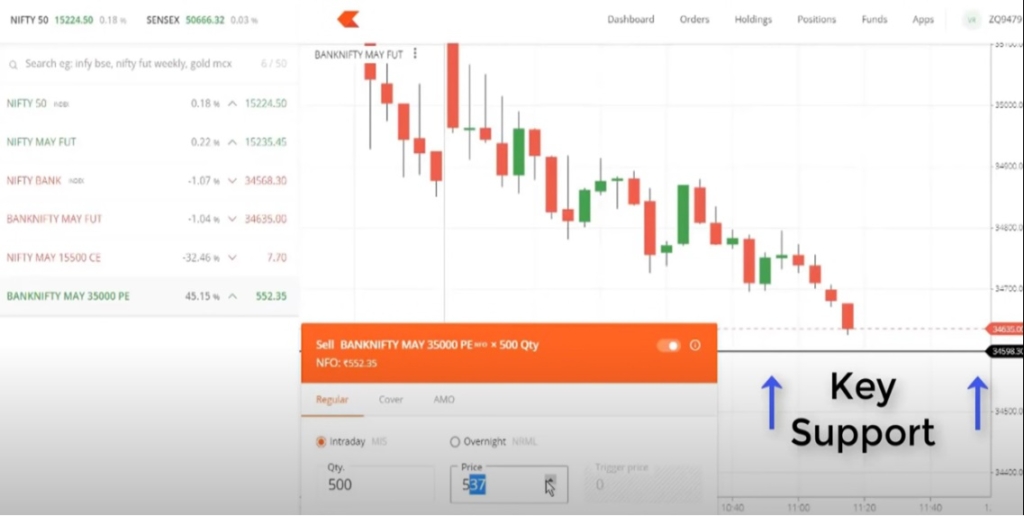
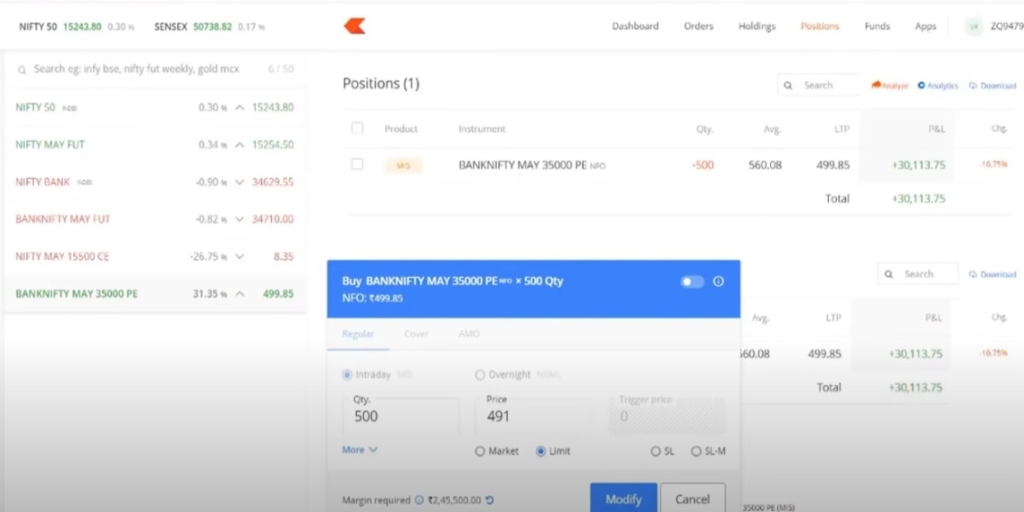
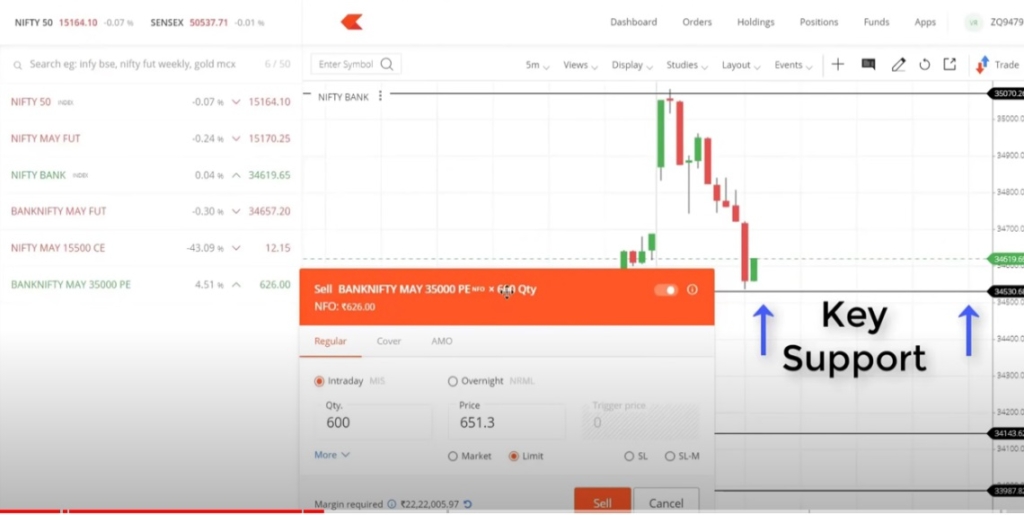
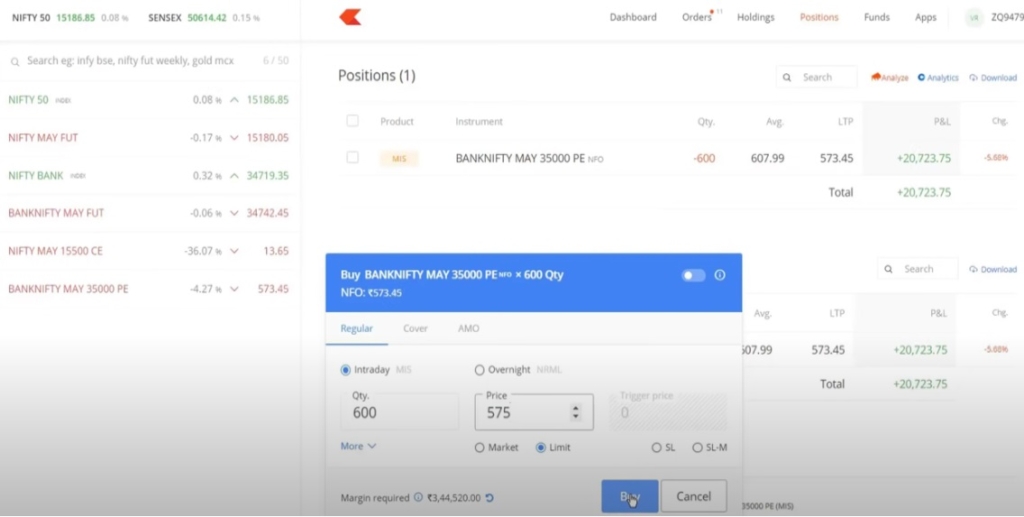
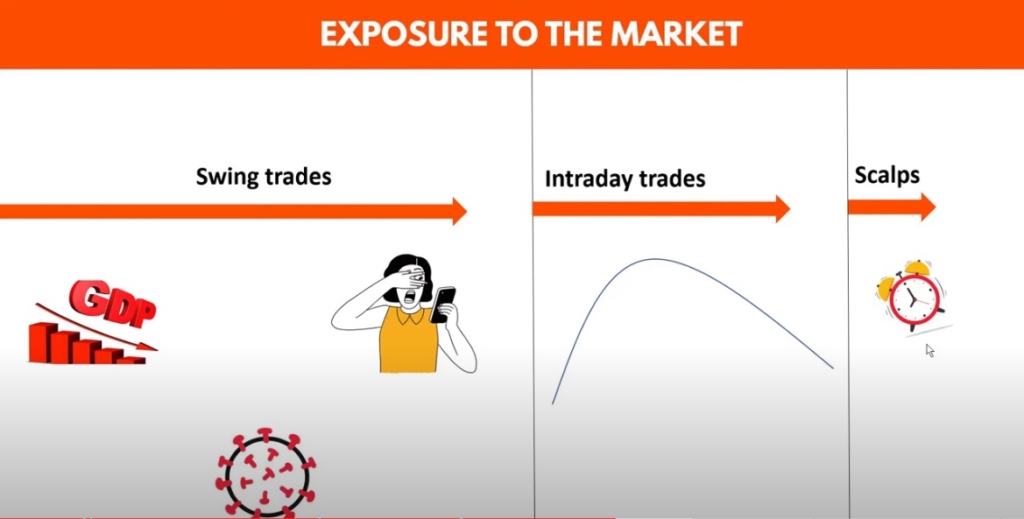

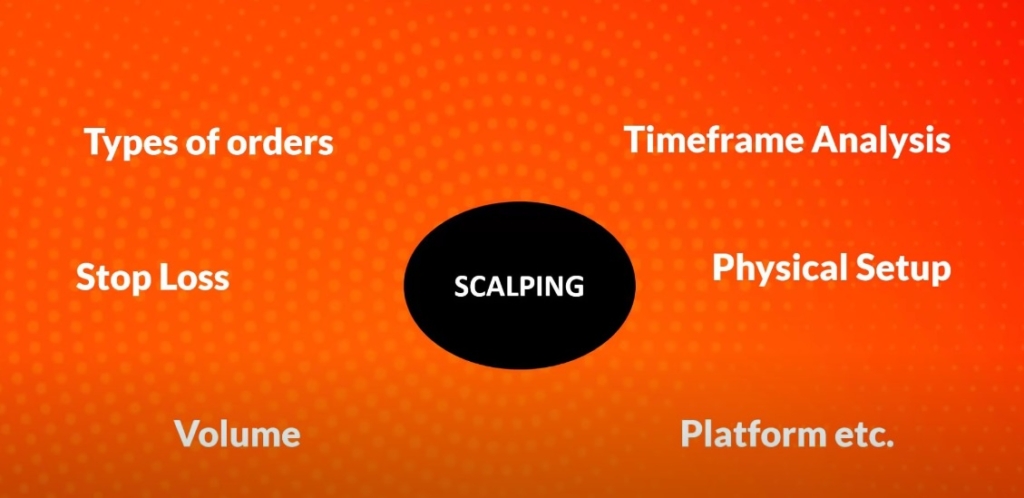









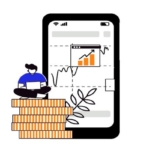




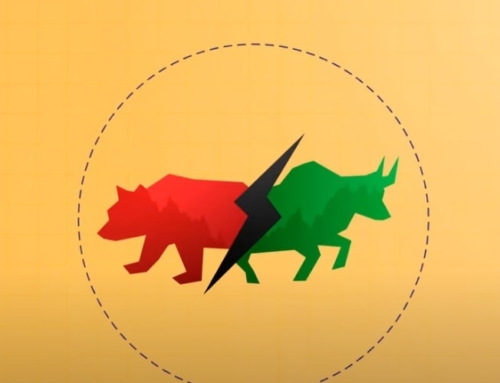



Leave A Comment